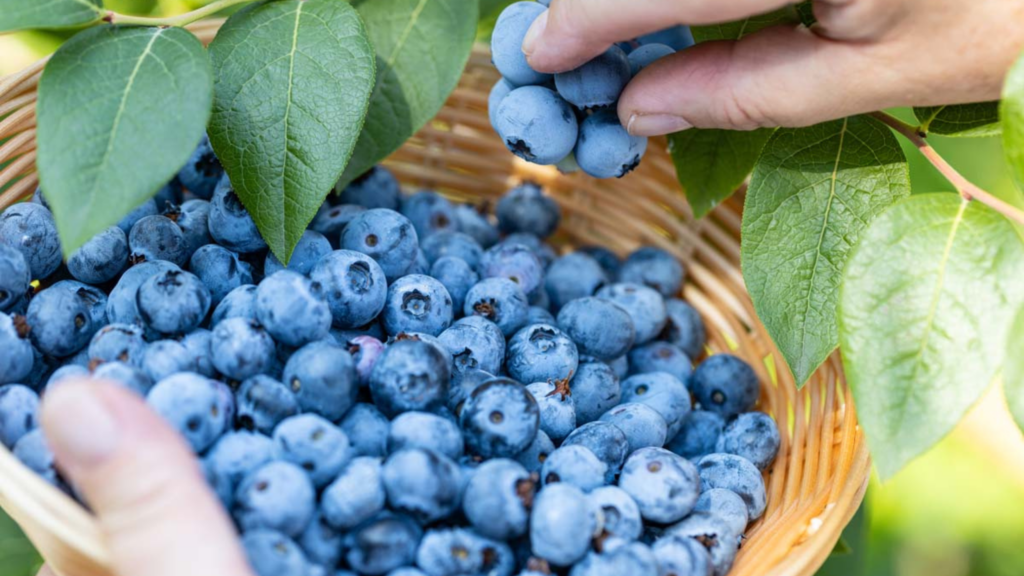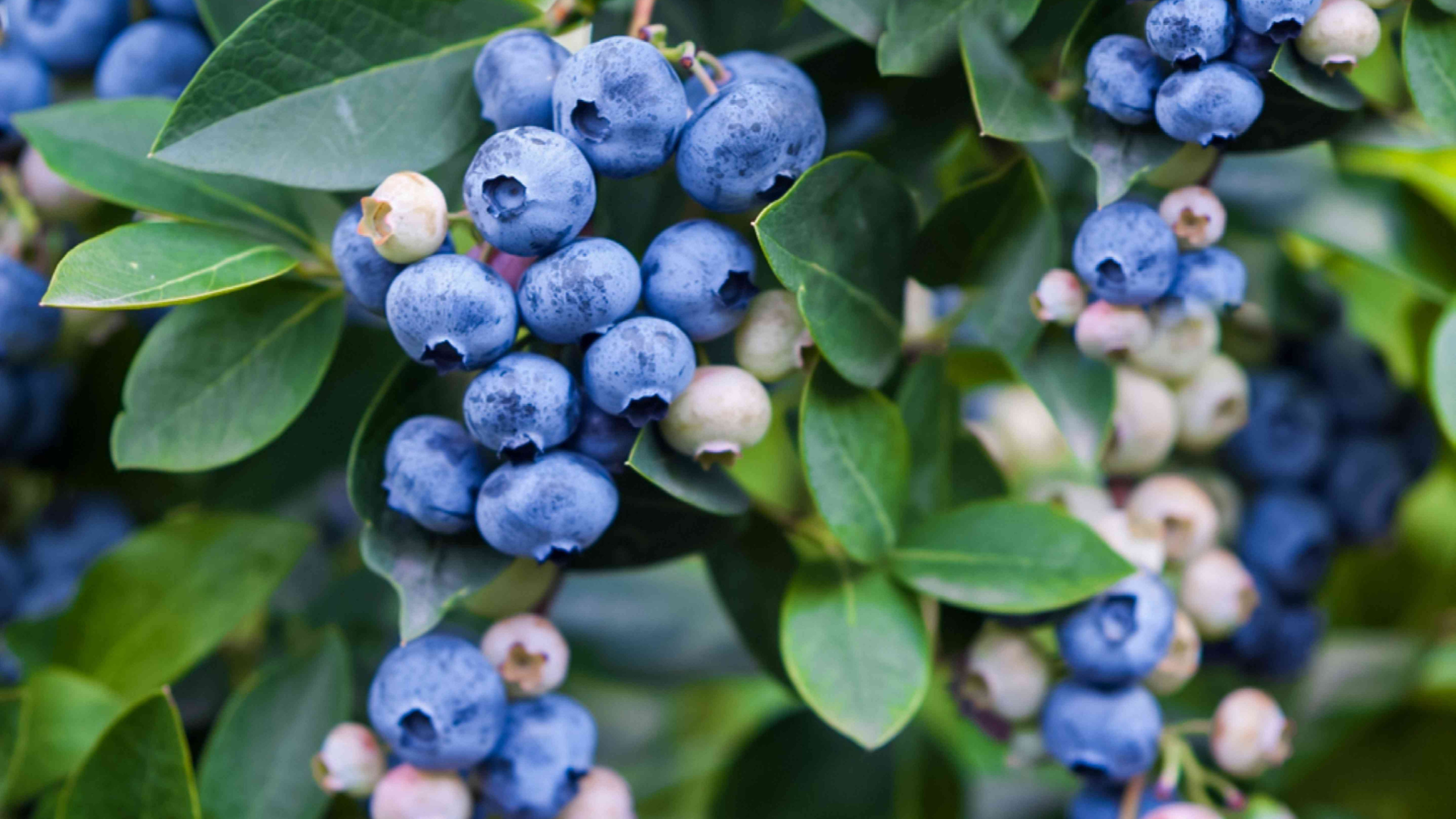Blueberries are not only a delightful fruit enjoyed during the summer months from June to September, but they are also packed with essential vitamins and minerals while being low in calories. If you wish to successfully plant, nurture, and harvest these nutritious berries, this guide is for you.

Understanding Blueberries and Bilberries
Although both blueberries and bilberries belong to the Vaccinium genus, they represent distinct species. Blueberries typically refer to larger cultivated varieties that grow in clusters, while bilberries (Vaccinium myrtillus), known as European blueberries, grow as low, shrub-like ground cover with smaller, solitary berries. While bilberries are hardier and easier to maintain, their berries are less commonly found in supermarkets due to their wild nature and smaller size. In contrast, commercial blueberries (Vaccinium corymbosum) are widely cultivated for their larger fruits and higher yields, necessitating more care.
Choosing the Right Location and Soil
Blueberries flourish in well-drained, acidic soils with a pH of approximately 4 to 5. European blueberries thrive in semi-shaded or shaded areas, while commercial varieties prefer full sun exposure. These plants not only contribute delicious fruit to our gardens but also provide nutrition and habitat for various wildlife, including birds and beneficial insects. The soil must be light and well-draining, avoiding waterlogged conditions, which blueberries cannot tolerate. Peaty or sandy humic soils are ideal, while limestone and clayey soils should be avoided due to their high pH.
Before planting, it’s wise to check the soil’s pH. If necessary, you can amend the soil with acidic potting mixes or berry-specific soil products to create suitable conditions for growth. Planting in containers is also an option, especially in regions where the native soil conditions are not favorable. In pots, blueberries can be a charming addition to patios or balconies, especially compact varieties like ‘Sunshine Blue’.
Ideal Planting Techniques and Timing
The best times to plant blueberries are either in the spring (March through April) or in the fall (October through November). Planting in the fall allows the roots to establish in warm soil before winter, leading to robust growth in the following spring. When planting, ensure that the blueberry bushes are placed at the same depth they were in their pots and water them thoroughly. While spring planting is possible, it may stress the plant, as it needs to grow roots while also producing leaves and flowers. It’s advisable to pinch off flowers during the first year to help the plant focus its energy on establishing a strong root system.
Blueberries can withstand temperatures as low as -16 °C (60.8 °F), but they are vulnerable to late spring frosts. In colder regions, protective measures should be taken during unexpected frosty nights to prevent damage that could reduce yields.
Fertilization, Care, and Pruning
Wild bilberries are relatively low-maintenance, requiring minimal fertilization and watering, except during prolonged dry spells. A spring application of acidic compost should suffice to maintain soil health. However, care should be taken not to over-fertilize with nitrogen, as it may lead to fungal diseases. On the other hand, cultivated blueberries require more attention due to their higher production needs. A berry fertilizer, often formulated for hydrangeas or rhododendrons, is suitable and should be applied at the time of planting and during the formative phase of the fruit.
Regular watering is essential, particularly during hot periods, as blueberry plants lack root hairs that typically absorb water and nutrients. Utilizing rainwater is beneficial as it generally has a lower lime content, helping maintain the necessary acidic conditions for blueberry health.
Companion Plants and Pest Management
Integrating companion planting can enhance your blueberry garden. Certain herbs and vegetables can nurture the growth of blueberries while simultaneously deterring pests. Plants such as garlic and certain flowers can create a beneficial environment. Be mindful of potential pest invasions, such as aphids and fruit flies, that might affect your berries. Regular inspections and prompt early interventions can keep these nuisances at bay.
Harvesting and Storing Blueberries
The optimal time for harvesting blueberries is during the peak season when they are fully colored and easy to pluck from the bush. Ripe blueberries should come off with a gentle tug. Store freshly picked blueberries in a cool place to maintain their flavor and nutritional value. They can also be frozen for long-term storage, which preserves their taste and texture for later use in various dishes, smoothies, or pastries.
By following these well-structured guidelines and understanding the needs of your blueberry plants, you can enjoy a bountiful harvest of delicious and healthy fruits throughout the summer season. Happy gardening and may your blueberry patches thrive! 🍇


When I originally commented I seem to have clicked on the -Notify me when new
comments are added- checkbox and from now on each
time a comment is added I receive 4 emails with the same comment.
Perhaps there is a way you can remove me from that service?
Many thanks!
This is really interesting, You are a very skilled blogger.
I have joined your feed and look forward to seeking more of your excellent post.
Also, I have shared your web site in my social networks!
useful content Department Stores Accessories Sunglasses
Good day! Do you know if they make any plugins to safeguard against hackers?
I’m kinda paranoid about losing everything I’ve worked hard on. Any recommendations?
Currently it appears like BlogEngine is the best blogging platform out
there right now. (from what I’ve read) Is that what you’re using on your blog?
I think the admin of this web page is truly working
hard for his site, since here every information is quality based data.
Excellent blog you have here but I was wanting to know if you knew of any user discussion forums that cover the same topics discussed here?
I’d really like to be a part of group where I can get comments from other experienced people that share the same interest.
If you have any recommendations, please let me know.
Thanks a lot!
Anyone else obsessed with how good services cleaning is?
“https://antoinelogean.ch/index.php?title=Benutzer:LFZHoward407”
Thanks for finally talking about > Planting and Growing
Blueberries: A Comprehensive Guide to Cultivation, Care,
and Harvesting 🫐 – green garden < Liked it!
You really make it seem so easy with your presentation but I
find this matter to be really something that I think I would never understand.
It seems too complex and extremely broad for me. I am looking forward for
your next post, I’ll try to get the hang of it!
Nice post. I was checking constantly this blog and I’m impressed!
Extremely helpful information specially the last part 🙂
I care for such info much. I was looking for this certain information for a long time.
Thank you and good luck.
I am curious to find out what blog platform you’re working with?
I’m experiencing some small security problems with my latest blog and I’d like to
find something more risk-free. Do you have any suggestions?
My brother recommended I might like this web site. He was entirely right.
This post actually made my day. You can not imagine just how much time I had spent for this information! Thanks!
After looking into a few of the articles on your blog, I really
appreciate your way of blogging. I added it to my bookmark webpage list
and will be checking back soon. Please visit my web
site too and tell me your opinion.
The internet gaming industry continues to expand, with
emerging wagering portals featuring extensive collections of slot
machines.
Very nice write-up. I definitely appreciate this site.
Stick with it!
I do not know if it’s just me or if everybody else encountering issues with
your website. It seems like some of the written text within your content are running off the screen. Can somebody else please provide feedback and let me know
if this is happening to them too? This might be a issue with my browser because I’ve had this
happen before. Appreciate it
Thanks for every other informative site. The place else may I get that kind of info written in such an ideal means?
I’ve a mission that I am simply now running on, and I have been on the glance out for such information.
The transformation of virtual gambling platforms: tendencies and forecasts
for 2025
Heya i’m for the first time here. I found this board and
I in finding It truly helpful & it helped me out much.
I hope to offer one thing back and help others like you helped me.
buy generic amoxil – https://combamoxi.com/ buy amoxil online
forcan order online – https://gpdifluca.com/# fluconazole 100mg brand
purchase cenforce – cenforce 100mg ca generic cenforce
cialis coupon 2019 – ciltad gn buy cialis overnight shipping
cialis soft – https://strongtadafl.com/# cialis online reviews
viagra online order no prescription – https://strongvpls.com/ sildenafil 50 mg coupon
More articles like this would remedy the blogosphere richer. https://buyfastonl.com/gabapentin.html
This is the make of post I recoup helpful. site
With thanks. Loads of knowledge! https://ursxdol.com/augmentin-amoxiclav-pill/
Proof blog you be undergoing here.. It’s intricate to espy high status script like yours these days. I really respect individuals like you! Take guardianship!! https://prohnrg.com/product/get-allopurinol-pills/
Proof blog you have here.. It’s hard to assign strong worth writing like yours these days. I justifiably respect individuals like you! Take vigilance!! https://aranitidine.com/fr/levitra_francaise/
More articles like this would pretence of the blogosphere richer. https://ondactone.com/simvastatin/
Thanks for putting this up. It’s evidently done.
brand cozaar 25mg
This is a keynote which is forthcoming to my verve… Many thanks! Unerringly where can I find the phone details in the course of questions? http://www.haxorware.com/forums/member.php?action=profile&uid=394308
order forxiga 10 mg without prescription – https://janozin.com/ buy forxiga
buy generic orlistat – https://asacostat.com/# xenical 60mg brand
This is the stripe of serenity I have reading. http://pokemonforever.com/User-Mfwpwj
You can protect yourself and your family close being heedful when buying pharmaceutical online. Some pharmaceutics websites control legally and put forward convenience, reclusion, rate savings and safeguards over the extent of purchasing medicines. buy in TerbinaPharmacy https://terbinafines.com/product/pyridium.html pyridium
This website exceedingly has all of the low-down and facts I needed there this case and didn’t identify who to ask. levitra pas cher
The thoroughness in this section is noteworthy.
I started irresistible https://www.cornbreadhemp.com/collections/thc-drinks a little while ago just now to observe what the hype was thither, and now I actually look cheeky to them ahead of bed. They don’t knock me out or anything, but they make it so much easier to depress and crumple asleep naturally. I’ve been waking up sensibility pathway more rested and not sluggish at all. Honestly, friendly of wish I’d tried them sooner.
https://t.me/s/RejtingTopKazino